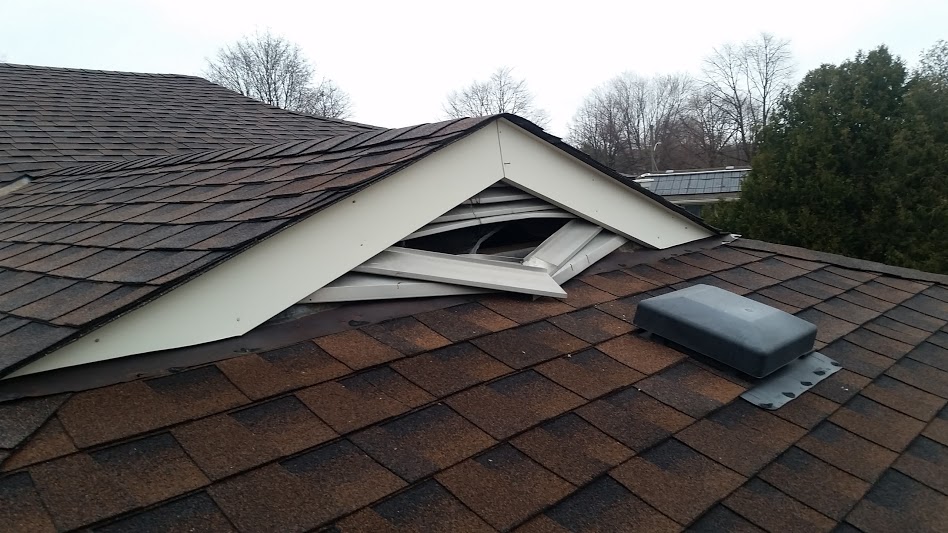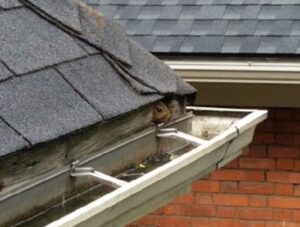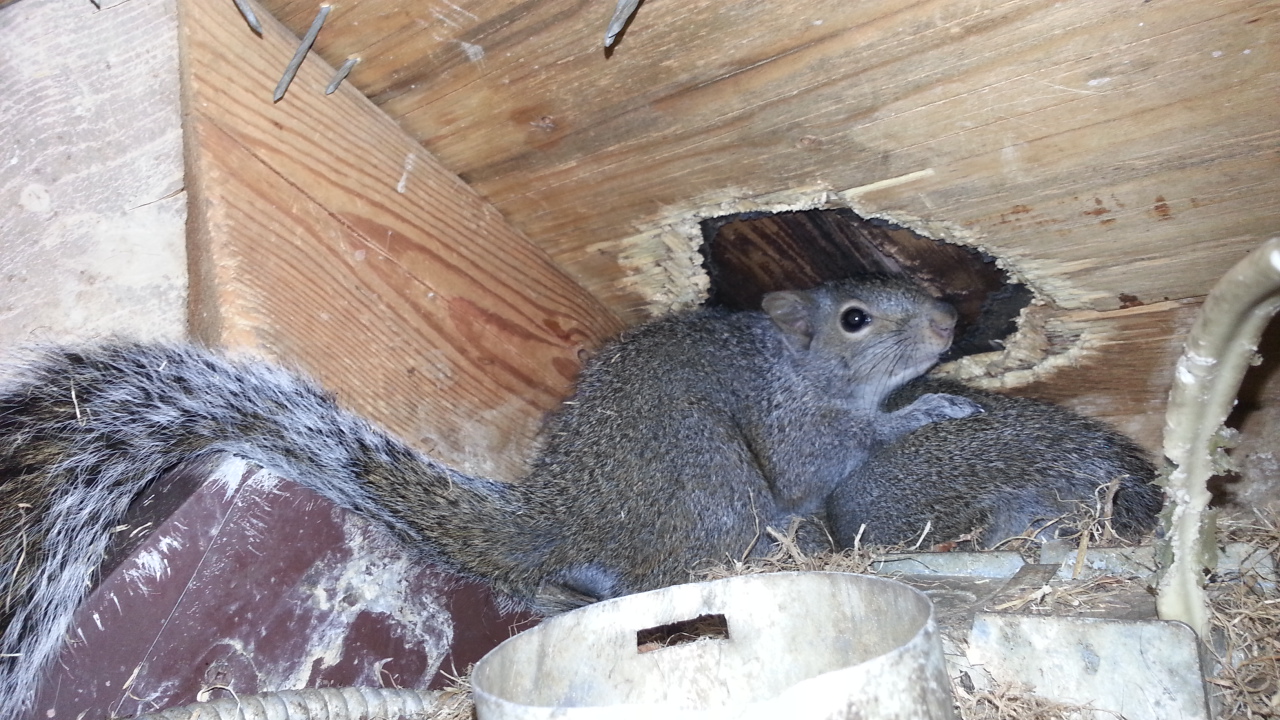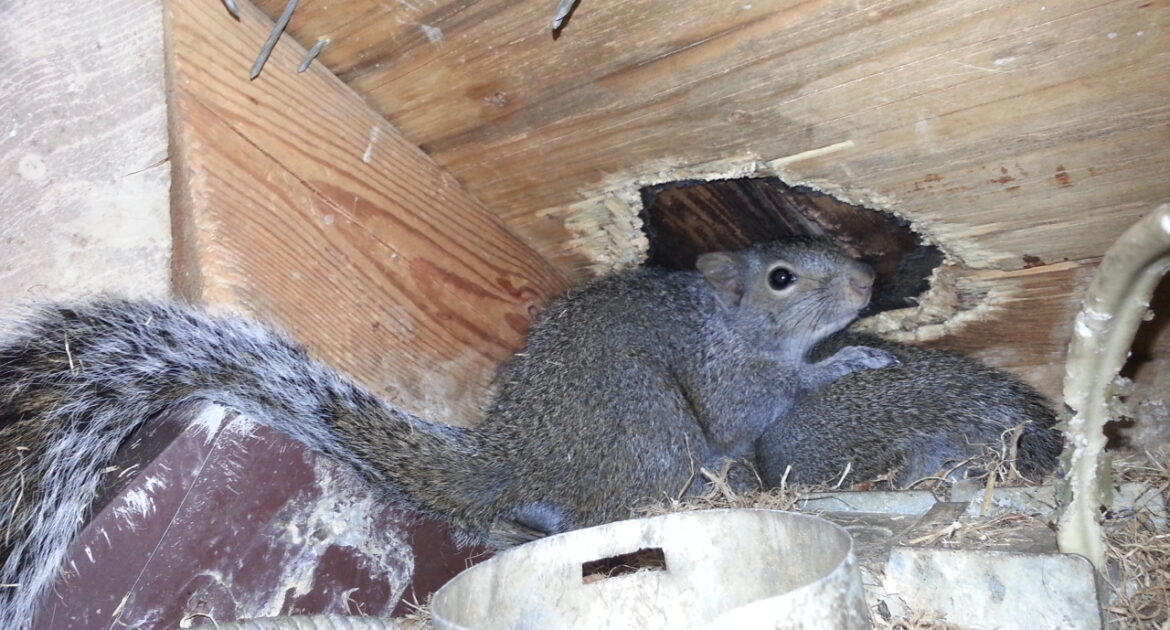Scratching and chewing sounds, the pitter-patter of feet, the unpleasant smell of animal droppings…these are all signs of squirrels in attic spaces. There are plenty of big trees around your neighbourhood, so why are squirrels making their home under your roof?
An Easy Place To Take Shelter
Squirrels are crafty and intelligent creatures, and at the end of the day, they are just looking for somewhere warm and secluded to take shelter from the elements. In the wild, squirrels tend to nest in the hollows of trees, forks in the branches, or abandoned bird nests. What you may not realize is that your home could be riddled with easy entry points to your warm, cozy attic.
Squirrels may choose your attic over local trees simply because of ease of entry. All it takes for most squirrels to squeeze their way in is an opening of at least 1/4 an inch in size. It doesn’t make a difference to a squirrel what its den looks like, and an infestation in your home is usually just a case of bad luck. So how exactly might these little rodents be making their way inside?
Wall Vents
Most homes have small exhaust vents connecting to their kitchen vents, dryers, and bathrooms. To a squirrel, one of these vents seems like an elevated tree cavity, positioned at the perfect height to keep them safe from their natural predators. Even if you have a plastic cover over the vent, a committed squirrel can chew through those pretty easily. Identifying the locations of all of your vents and inspecting them regularly may help you to prevent squirrels from infiltrating. Make any necessary repairs or security upgrades before you end up with a rodent problem.
Gable Vents
Gable vents are typically installed in pairs near the edge of your roof to provide ventilation in your attic. You can probably locate one gable vent on each end of your house. These are usually covered with plastic, steel, aluminum, or wooden slats. Squirrels can chew through the edges of these slats to make openings large enough for them to squeeze through.

Roof Vents
The small holes connecting to plumbing stacks, chimneys, and air vents are usually protected by flashing. Over time, this protective covering may fall off or suffer damage. The brittle materials underneath can then become weakened by water rot, making them easy for curious squirrels to break in.
Soffit Vents and Edges
Many homes have parts of the roof that stick out, and the horizontal covering installed to seal it up is known as the soffit. Many soffits also include vent coverings. If your soffit was poorly installed, it may not be flush with the edges of the roof, making a perfect opening for squirrels to get in. If the vent covering is made of cheap plastic, it is no problem for squirrels to chew through, even when hanging upside-down.
Fascia
Like soffits, fascia is added to extruding parts of your home’s roof. Fascia is applied to vertical surfaces, and are often made of weaker materials. The most common fascia entry points are corners where the seal is not perfect and squirrels can nibble the rest of the way through.
Roof Edges
The edge of your roof may be secure when it is first built, but clogging in the gutters that run along these edges can lead to gradual water damage over time. This softens the material, and if it is not repaired or properly maintained, holes can start to form that squirrels can easily slip through.

Humane Squirrel Removal
While squirrels harbour no ill intentions toward you, their presence in your home can be a nuisance, and can potentially be dangerous for your property or your family. It is important to understand that these animals are just looking for a place to stay warm and comfortable, especially in the winter. Sometimes the squirrels in your attic may be a family with babies.
Attempting to remove squirrels on your own is not recommended, as it could be dangerous to the animals and you. On the one hand, baby squirrels cannot fend for themselves, and their mothers need to be able to access them. On the other hand, wildlife can carry harmful diseases that you can contract without the right training and protection. The safest and most effective way to handle a squirrel problem is with humane wildlife removal services, which we offer at Skedaddle.




